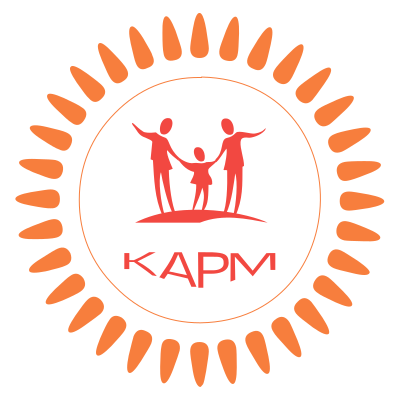The importance of calretinin in the diagnosis of Hirschsprung's disease
DOI:
https://doi.org/10.37800/RM.4.2023.91-96Keywords:
Hirschsprung's disease, agangliosis, enterocolitis, calretininAbstract
Relevance: Hirpsprung's disease most often manifests as symptoms of intestinal obstruction, characterized by the colon nervous system congenital disability, frequent bloating, and impaired stool passage up to the clinic of intestinal obstruction. In recent years, this pathology has belonged to the group of neuro-crystopathy. The leading cause of death is the development of severe enterocolitis. Due to the lack of clear clinical manifestations, it is often observed that this disease goes undetected during the neonatal period. Currently, the only treatment is surgery. The final diagnosis is made after examining histopathological specimens, the diagnosis of which is difficult due to incomplete differentiation of the mucous and intermuscular layers in infancy. Modern diagnostic methods, including immunohistochemistry with calretinin, show its high efficiency.
The study aimed to evaluate calretinin's effectiveness in diagnosing Hirschsprung's disease.
Materials and Methods: We analyzed the medical records of 61 patients treated from birth to 3 months from 2017 to 2022 and their histopathological materials. Histopathological examination was performed first by hemotoxylin-eosin method, then by immunohistochemistry with a monoclonal antibody against calretinin.
Results: This study characterized critical clinical features of Hirschsprung's disease. Pronounced clinical manifestations of the disease began at 2 months of life in 36% (22) and up to 3 months – in 34% (21) of patients. In the study, delay of the first stool for up to 2 days was observed in 82% (50) of patients. The examined children had a gestational age greater than 38 weeks. According to the nosological structure, a rectosigmoid type of intestinal lesion was identified in 82% (50) of patients. The mortality rate was 3% (2). Complications after surgical treatment were not recorded. Loss of calretinin immunoreactive nerves, characteristic of Hirschsprung's disease, was observed in 96% (59) of cases. Genetic testing was performed on 21 (34%) patients, and RET mutations were found in 14% (3).
Conclusion: Along with general research methods in diagnosing Hirschsprung's disease, which make it possible to make a final diagnosis, modern research methods have shown to be highly effective. Early detection and prompt assistance to patients with Hirschsprung's disease allow them to rehabilitate and avoid complications that arise after surgery quickly.
References
Джорджесон К., Мюнстерер О., Мокрушина О.Г. Болезнь Гиршпрунга. В кн: Козлов Ю.А., Подкаменев В.В., Новожилов В.А., ред. Непроходимость желудочно-кишечного тракта у детей. Национальное руководство. М.: ГЭОТАР-Медиа; 2017. с. 446-464. ISBN 978-5-9704-4127-5.
Georgeson K, Myunsterer O, Mokrushina OG. Hirschsprung's disease. In: Kozlov YA, Podkamenev VV, Novozhilov VA, editors. Obstruction of the gastrointestinal tract in children. National Guide. M.: GEOTAR-Media; 2017. p. 446-464. ISBN 978-5-9704-4127-5. (In Russ.).
https://www.geotar.ru/lots/NF0006695.html
Каган А.В., Котин А.Н., Караваева С.А., Кесаева Т.В. Проблемы диагностики болезни Гиршпрунга у новорожденных: клинические примеры. Педиатр. 2020;1(11):83-90.
Kagan AV, Kotin AN, Karavaeva SA, Kesaeva TV. Problems in diagnosing Hirschsprung's disease in newborns: clinical examples. Pediatrician. 2020;1(11):83-90. (In Russ.).
https://doi.org/10.17816/PED11183-90
Amiel J, Sproat-Emison E, Garcia-Barcelo M, Lantieri F, Burzynski G, Borrego S, Pelet А, Arnold S, Miao X, Griseri P, Brooks AS, Antinolo G, L de Pontual, Clement-Ziza М, Munnich A, Kashuk С, West K, Wong KK, Lyonnet S, Chakravarti A, Tam РК, Ceccherini I, Hofstra RM, Fernandez R. Hirschsprung disease, associated syndromes and genetics: a review. J Med Genet 2008;45:1-14.
http://doi.org/10.1136/jmg.2007.053959
Chakravarti A, McCallion AS, Lyonnet S. Hirschsprung Disease. In: Valle DL, Antonarakis S, Ballabio A, Beaudet AL, Mitchell GA, editors.The Online Metabolic and Molecular Bases of Inherited Disease. NY: McGraw Hill; 2019.
https://ommbid.mhmedical.com/content.aspx?bookid=2709§ionid=225899656
Heuckeroth, R. Hirschsprung disease – integrating basic science and clinical medicine to improve outcomes. Nat Rev Gastroenterol Hepatol. 2018;15:152-167.
https://doi.org/10.1038/nrgastro.2017.149
Говорухина О.А. Причины развития послеоперационного энтероколита при болезни Гиршпрунга у пациентов детского возраста. Нов хир. 2019;4(27).
Govoruhina OA. Reasons for the development of postoperative enterocolitis in Hirschsprung's disease in pediatric patients. Nov khir. 2019;4(27). (In Russ.).
https://dx.doi.org/10.18484/2305-0047.2019.4.369
Морозов Д.А., Пименова Е.С., Королев Г.А. Энтероколит у детей с болезнью Гиршпрунга. Биомед Социол. 2018;4(3):103-107.
Morozov DA, Pimenova ES, Korolev GA. Enterocolitis in children with Hirschsprung's disease. Biomed Sociol. 2018;4(3):103-107. (In Russ.).
http://dx.doi.org/10.26787/nydha-2618-8783-2018-3-4-103-107
Lorijn F, Boeckxstaens GE, Benninga MA. Symptomatology, pathophysiology, diagnostic work-up, and treatment of Hirschsprung disease in infancy and childhood. Gastroenterolgy Rep. 2007;9(3):245-253.
https://doi.org/10.1007/s11894-007-0026-z
Barshack I, Fridman E, Goldberg I, Chowers Y, Kopolovic J. The loss of calretinin expression indicates aganglionosis in Hirschsprung's disease. J Clin Pathol. 2004;57:712-716.
http://dx.doi.org/10.1136/jcp.2004.016030
Alexandrescu S, Rosenberg H, Tatevian N. Role of calretinin immunohistochemical stain in evaluation of Hirschsprung disease: an institutional experience. Int J Clin Exp Pathol. 2013;6(12):2955-2961.
www.ijcep.com/ISSN:1936-2625/IJCEP1310037
Langer JC, Rollins MD, Levitt M, Gosain A, L de la Torre, Kapur RP, Cowles RA, Horton J, Rothstein DH, Goldstein AM. Guidelines for the management of postoperative obstructive symptoms in children with Hirschsprung disease. Pediatr Surg Int. 2017;33:523-526.
https://doi.org/10.1007/s00383-017-4066-7
Kumari M, Das Ch, Mukhopadhyay M, Dev Patra R, Kumar Mitra P, Mukhopadhya B. A study on Genetic Polymorphism of RET Proto-Oncogene in Hirschsprung’s Disease in Children. Afr J Paediatr Surg. 2020;17:104-107.
Downloads
Published
How to Cite
Issue
Section
License
Copyright (c) 2023 The rights to a manuscript accepted for publication are transferred to the Journal Publisher. When reprinting all or part of the material, the author must refer to the primary publication in this journal.

This work is licensed under a Creative Commons Attribution-NonCommercial-NoDerivatives 4.0 International License.
The articles published in this Journal are licensed under the CC BY-NC-ND 4.0 (Creative Commons Attribution – Non-Commercial – No Derivatives 4.0 International) license, which provides for their non-commercial use only. Under this license, users have the right to copy and distribute the material in copyright but are not permitted to modify or use it for commercial purposes. Full details on the licensing are available at https://creativecommons.org/licenses/by-nc-nd/4.0/.




